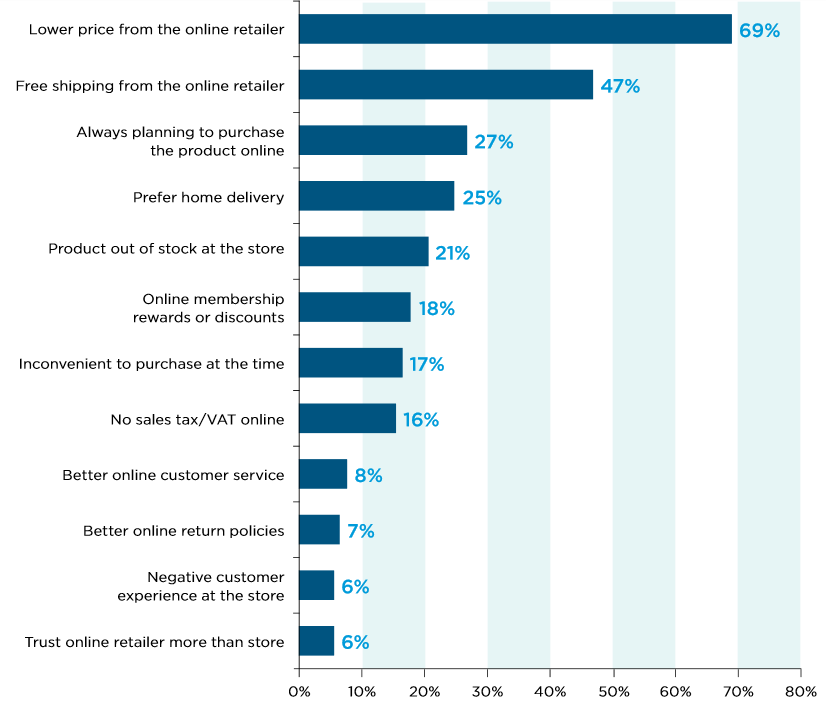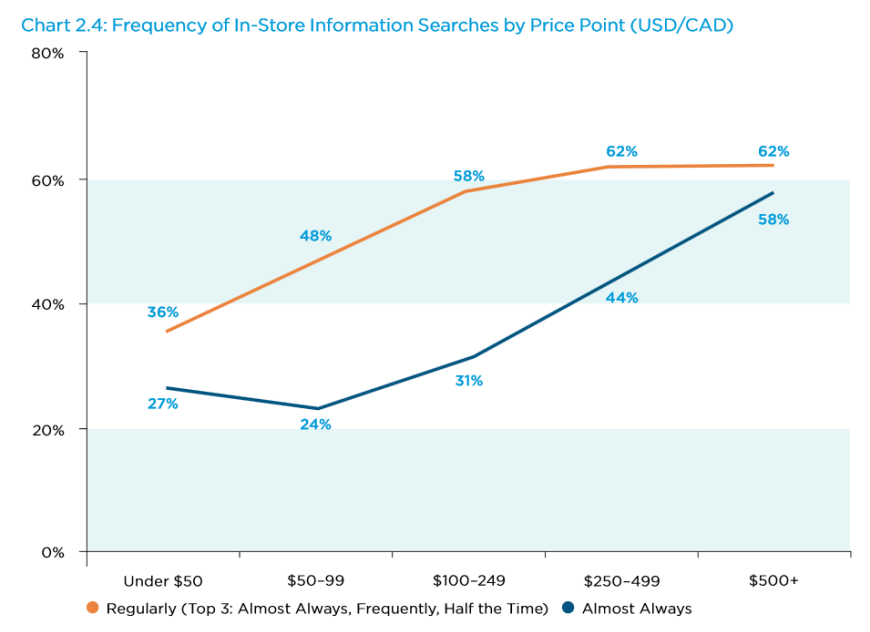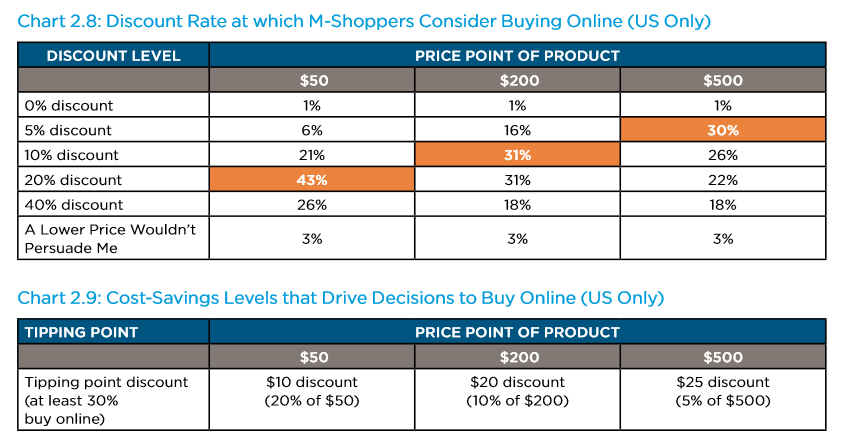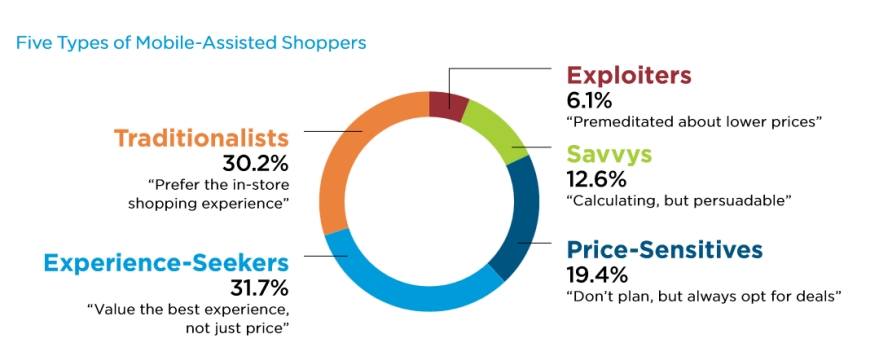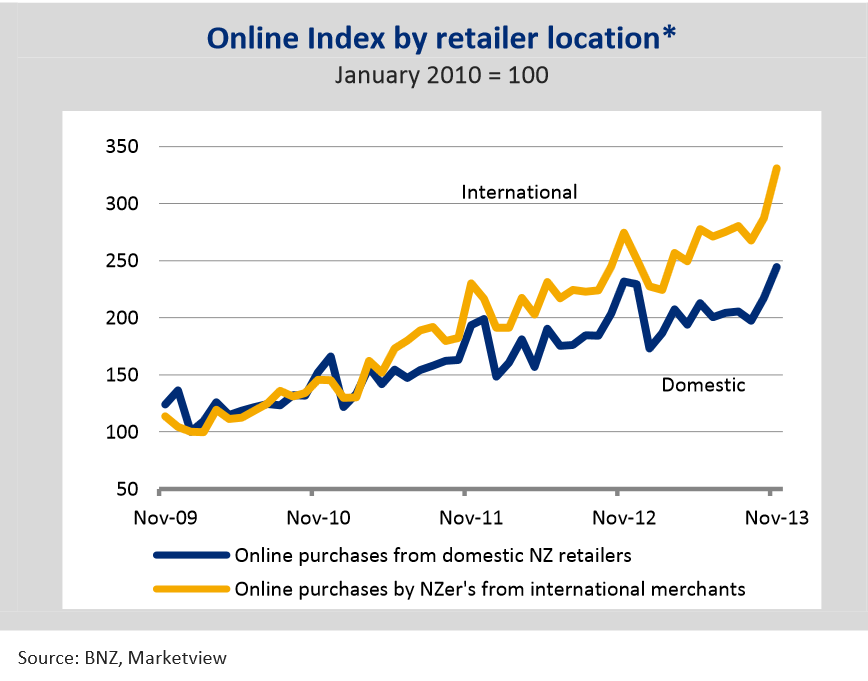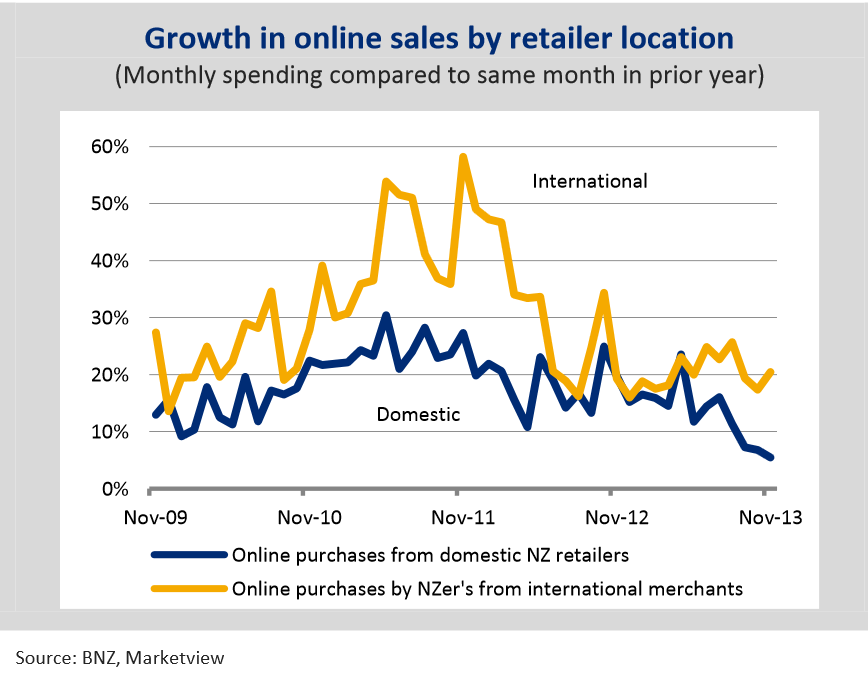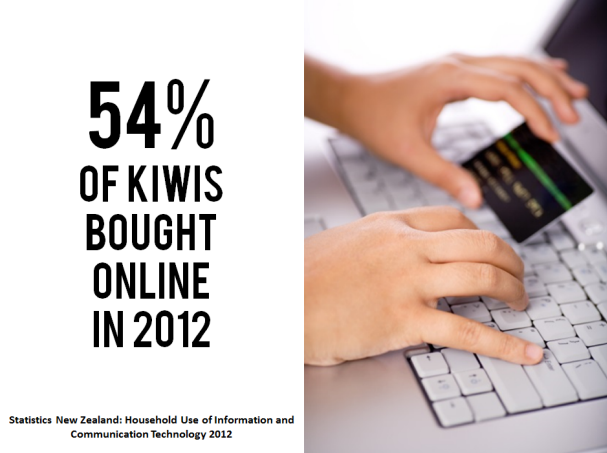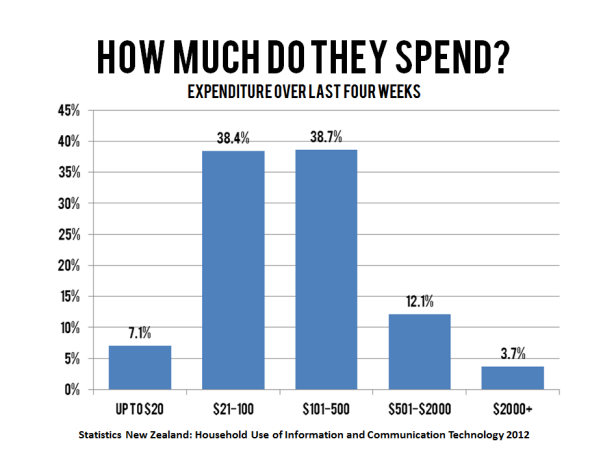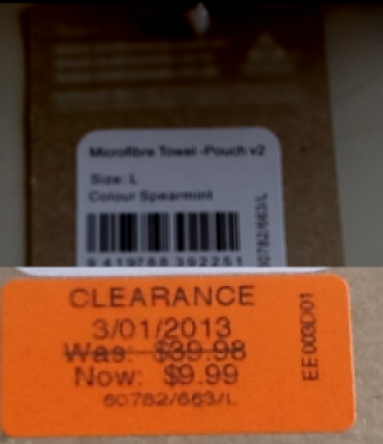With the continuing spread of smartphones (by May 2013, according to TNS Mobile Life, 60% of Kiwis had smartphones), local retailers need to develop strategies to deal with the practice known as “showrooming”.
What is showrooming? According to Wikipedia, “showrooming is the practice of examining merchandise in a traditional brick and mortar retail store without purchasing it, but then shopping online to find a lower price for the same item.”
Why do consumers showroom?
A September 2013 Canadian/U.S. study, “Showrooming and the Rise of the Mobile-Assisted Shopper“, identified the key reasons cited by consumers:
Conversely, why do Mobile Shoppers still buy instore?
The value of the item under consideration matters, according to the study, with more expensive items (unsurprisingly) more likely to be showroomed:
And the critical pricepoints?
Is showrooming a problem in New Zealand?
Yes, according to Colmar Brunton (CBOmnijet Sept 2013), who report that 58% of online Kiwis have seen something in a shop, checked the price on their phone while in the shop and then bought the item elsewhere.
A BBC news report highlighted the demise of a camera retailer, and staff reaction to the store’s closure:
“The staff at Jessops would like to thank you for shopping with Amazon” read the sign in a shop window shortly after the British camera chain went into administration.
It was a dry reaction to a growing problem for “bricks and mortar”-focused retailers. Showrooming is said to have exacerbated the decline of high-profile brands like Comet.
Gadget stores, bookshops and the cosmetics industry are all losing sales to showroomers, but solutions have proved hard to find.
Kelly Buckle, 23, of Birmingham, sometimes spends more than £200 in a single shopping trip – but never actually gets as far as the checkout.
“I can go in and smell a perfume and then find it online for £30 less,” she says.
Research by design agency Foolproof found that 24% of people showroomed while Christmas shopping – and 40% of them took their business elsewhere.
So what (if anything) can be done about showrooming?
One strategy we wouldn’t advise is to follow the example of this Queensland store and charge prospective customers just for browsing:
A Brisbane specialty grocery store owner is charging customers to browse after becoming fed up with people who enquire but don’t buy.
A poster telling customers they’ll be charged $5 for browsing if they don’t purchase anything has been put up at Celiac Supplies in the suburb of Coorparoo.
Owner of the gluten free produce store, Georgina, says she resorted to putting up the sign after spending hours each week giving advice to people who leave empty-handed.
About 60 people a week would go into the store, ask questions and then buy the same or similar product at a supermarket chain or online.
She has became frustrated as her prices often match that of the supermarkets but people still go elsewhere as they are under the impression it will be cheaper.
She says the sign has turned some people away but others are more sympathetic and pay up.
“I can tell straight away who are the rat bags who are going to come in here and pick my brain and disappear,” she said.
Australian Retailers Association executive director Russell Zimmerman says charging customers to browse will likely turn people away.
He says a few stores in Queensland are charging to try on shoes or clothing but this is the first time he’s heard of a browsing charge.
Better instead, perhaps, to consider this American example. Time Magazine reports that leading U.S. retailer Nordstrom is testing one possible way to benefit from the practice through a partnership with jewellery website Blue Nile:
Blue Nile is paying Nordstrom for display space in the chain’s downtown Seattle store. A Blue Nile representative is on hand, iPad at the ready, to answer questions and help create customized rings.
The practice is unique because Blue Nile is a direct competitor to Amazon, and customers who want one of the rings have to purchase from the jeweler’s website.
Why would Nordstrom want to be used so blatantly as a mere showroom for another retailer? For one thing, though the terms of the arrangement were not made public, Blue Nile most certainly is paying the department store for its prime retail space. The other reason for the partnership is that Nordstrom hopes it will attract new customers to check out its Wedding Suite area, where they’ll browse (and perhaps buy) wedding dresses, bridal gowns, and other items before or after checking out the jewellery from Blue Nile.
If that sort of partnership strategy is unlikely to work for you, here are some other possibilities. First, USA Today suggests these ten strategies:
1. Offer benefits. For those who purchase from you, offer post-purchase support — lessons, personal set-up, service, telephone support.
Make sure you prominently display the fact that such services are included after purchase for those who purchase from you.
2. Stock different merchandise. If a shopper can get exactly the same merchandise online at a lower price, it’s easy to comparison shop.
So look for items that are unique or special in some way.
3. Specialize. Become a desired destination for certain shoppers.
A small grocery store in my neighborhood, nondescript store where people pick up a few last-minute necessities, transformed a section into a specialty store, stocking craft beers with a sign outside touting “999 great beers — and a few lousy ones.”
4. Hold events. Become a place customers want to hang out.
I recently attended a great event at my local bookstore, Kepler’s Books in Menlo Park, Calif. One Saturday night, they had a book swap.
For a price, the bookseller offered food and wine and guests swapped books they loved with one another. It reminded me how wonderful it is to be surrounded by people who love books and reading and how fabulous it is to go to a vibrant, real bookstore.
5. Create a membership programme. Why not turn customers into members?
This isn’t as crazy as it sounds. After all, outdoor sports retailer R.E.I. has members. Members pay a small price but get a discount on purchases, invitations to special events, extra services, and a greater feeling of attachment to your store.
6. Engage with customers on social media. The closer customers feel to you, the more likely they are to be loyal.
7. Allow customers to run a tab. Everyone loves to be considered a regular.
If you sell something that customers purchase regularly — books, garden supplies, hardware — create a programme where they leave a credit card on file and just add to their tab when they come in.
8. Make sales from your website. Some customers may not be quite ready to buy when they come to your store but want to make an online purchase later.
If you don’t have e-commerce on your website, they’ll go elsewhere.
9. Provide great service. Small businesses have to go the extra mile to stay alive.
I go to my local hardware store instead of the big, ugly home-improvement stores because I get help from people who really know what they’re talking about. They’re friendly, helpful, knowledgeable, and I like going there.
10. Do everything you can to remind people what they lose when they fail to support local stores: the convenience of shopping locally, the health and vibrancy of their town, and, most important, tax dollars that support their schools, streets, and safety.
The US National Retail Federation gives some useful additional advice:
11. Seize the moment. Bricks-and-mortar retailers have a chance to salvage a sale that might not otherwise happen if the customer is merely shopping online.
12. Engage all five senses. Take advantage of the physical presence of the customer to wow them with sight, sound, touch, taste and smell.
13. Upskill your staff. In-store consumers have more information than ever before. If sales associates can’t enhance that knowledge — or worse, know less about a product than the customer — the sale can be lost.
But “if the sales associate is empowered with technology and has a deeper understanding of the product” and access to CRM data, “they’ll have a better opportunity to connect more effectively with the shopper,” says Branden Jenkins, general manager of e-tail/retail products for NetSuite.
Focusing on staff expertise will move the in-store experience from commodity-based to “value added”. People still buy fashion in a store to ask, ‘Does this look good on me?’ … [retailers] need to drive up knowledge as currency.
14. Know your customers. Customers also want to feel valued — and known — by the retailer.
The battle for the retail floor is going to happen in the cloud [via] customer data and an understanding for customer preference. Most companies — retailers and non-retailers alike — “do a poor job of leveraging the valuable customer information they have,” says Brent Cohler, director of mobile product marketing for SAP. “That’s frustrating because the more customers are engaging with the brand, the greater their loyalty and expectations. Retailers should provide customers with personalized content and offers at the point of decision. They can do this using information from a variety of sources … and combining it with the rich contextual signals that mobile devices provide.”
Greg Girard, program director of merchandise strategies for IDC Retail Insights, cites the MyLowe’s plan, in which Lowe’s customers swipe a card when they make a purchase and can keep up with home-oriented details online. Lowe’s “can help manage warranties of products … or remind them that it’s time to do periodic maintenance,” he says. “That’s a great customer support system, but there’s analytics behind it, too.”
15. Millennials are leading the way … but not for long
Mark Logan, senior vice president of digital innovation at advertising agency Barkley and head of Moonshot Innovation Lab, says half of all millennials surveyed in 2011 reported using smartphones while shopping, compared with 21 percent of non-millennials. “A year later, that gap had closed,” he said.
And retailers with older core audiences need to pay particular attention, says Jeff Fromm, Barkley’s executive vice president and author of Marketing to Millennials. “The older generation is adopting more and more the technology habits of the millennials,” he says. “Millennial influence is much greater than just the impact on members of their generation.”
Barkley’s research showed Facebook was the second most-used app among millennials while they shopped. “When we asked them about it, they told us they use it as a way to consult with friends about a potential purchase,” Logan says.
In fact, the research showed that 60 percent of millennials don’t make a decision without seeking advice from others. Retailers “could make it easier to gain ratings/reviews and see that the value equation is in line instead of trying to prevent it,” Fromm says.
Logan cites cosmetic retailer Sephora, which allows customers to scan a barcode for access to reviews and ratings. “It’s a simple tactic that gets people thinking about checking out the review,” he says. “It brings the tacit endorsement from all those voices into the … store.”
And for millennials — and those who follow — that might just be enough to close the sale.
Mobile-Assisted Shoppers, Segmented
Finally, let’s hear some good news. That September 2013 study we mentioned earlier, “Showrooming and the Rise of the Mobile-Assisted Shopper“, took a closer look at the category and established that not all shoppers are alike. The study identified five different segments:
These were the key findings of the study:
- Only 6% of Mobile-Shoppers are “Exploiters” — already planning to buy online, and always opting for the lowest price
- 30% are “Traditionalists” — committed to purchasing in-store, and only using their smartphones to find more information
- Convenience, urgency, and immediacy — the top three reasons that Mobile-Shoppers buy in-store even after they find the same product cheaper online
- 48% of Mobile-Shoppers are more likely to purchase products in-store despite equal or cheaper prices online when they are a loyalty program member
- 60% of Mobile-Shoppers are more likely to buy a product in the store when they find online reviews on their smartphone
- 55% are willing to sign up for a store loyalty programme in order to gain benefits on their smartphone while in the store
For more details about these Mobile Shopper segments, download the free report here.
Our conclusion: showrooming is a problem for retailers, but not an insoluble one.

